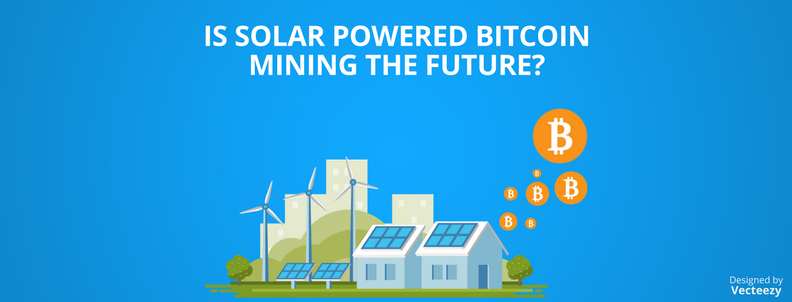Bitcoin took a wild ride in 2017, going all the way from about $1,000 back in January to $19,000 at one point in December. A lot of the virtual currency’s activity was driven by individuals and larger companies who were setting up and expanding Bitcoin mining operations – takes up a ton of electricity. One researcher said in 2016 that Bitcoin mining could one day “lead to a continuous electricity consumption that lies between the output of a small power plant and the total consumption of a small country like Denmark by 2020.”
It’s been estimated that it will take about 132 years to mine all 21 million Bitcoins in existence. Mining is done by specialized computers that consume a lot of electricity while searching for the correct hash keys to make Bitcoin. Since the algorithm behind Bitcoin actually makes it harder to mine as time goes on.
But since the price of Bitcoin is currently in the low five figures, there’s a lot of incentive to mine due to the prospects of making good cash. This creates another problem because there’s been a 95% correlation between the price of Bitcoin and the mining difficulty over the past couple years.
How Much Electricity Are We Talking About?
Bitcoin mining probably consumes electricity equivalent to the output by three nuclear reactors. This makes tapping into the power grid to mine Bitcoin pretty much economically infeasible. Bitcoin mining is only consuming more and more electricity because the cryptocurrency has been on an upward surge for a long time now.
This means that everyone who is looking to mine is now trying to figure out how to keep their electricity expenses low. Some operations have set up shop in countries like Iceland to take advantage of geothermal power. Nations like Belarus have also become attractive because of the relatively low cost of power compared to other places.
However, solar power has actually become one of the most talked about ways for miners to run their operations, especially since Bitcoin and solar actually have a pretty long relationship together.
How Miners Are Already Using Solar Power
Back when the cryptocurrency was just a fraction of where it is now, one 2012 fourm conversation on Bitcointalk.org detailed the setup of a solar power mining operation in Australia. Even when mainstream interest in Bitcoin was relatively low, and some in the financial world had ‘given up on cryptocurrency’, solar powered mining projects were still being discussed online.
For example, a cryptocurrency lover published a guide in 2013 about how to build a solar-powered mining plant. In 2015, a Bitcoin fan took to YouTube to show off his Bitcoin solar-powered mining farm. They said the power consumption of their S3 Antminer was actually being offset by the power of the sun’s energy thanks to their solar panels.
As Bitcoin started to grab the attention of everyone in mid-2017, one Reddit user posted about their solar mining operation in the Southwest desert. They explained that each of their miners was producing about .007 Bitcoin each day at the time thanks to solar power. They were also looking to expand the number of mining rigs because things were so successful.
The user noted one Antminer S9 ASICS mining system cost about $1225 at the time, and each mining operation totaled $8,000 with the addition of 6kw of solar panels, deep cycle lead-acid batteries, and a power control system.
Is Solar Power Mining Economically Feasible?
Even if an $8,000 cost seems expensive, some believe solar power could actually make mining somewhat viable despite the limitations of the cryptocurrency’s algorithms.
A lot of mining today is done by massive companies with extremely powerful computers, and not by individuals or small firms (which is why some future cryptocurrencies are also becoming ASIC-resistant). But since Bitcoin mining is largely driven (or hindered) by electricity prices, solar power has the strong potential to make mining more accessible and easier.
One Bitcoin club called Nastymining teamed up with the solar energy company Sunpower in early 2017 to fuel some of their mining equipment inside their facility. There’s speculation that miners and/or companies could take advantage of renewable energy tax credits if they were to use solar panels to power their operations. This could potentially offset some of the tax burdens associated with selling Bitcoin.
Tam Hunt of Greentechmedia calculated back in September that a 1-megawatt Bitcoin mining project could have a “net present value” of at least $9.3 million dollars and a 20-year net revenue of about $19 million. These numbers are based on a Bitcoin price of $2,500. Even though Bitcoin’s price is far above this figure right now, these numbers are still looking pretty good when compared to the average 1-megawatt solar project, which typically has a value of $200,000 to $400,000. The breakdown of the model can be seen here.
What Are The Advantages of Mining With Solar Power?
Solar Bitcoin miners also have the benefit of connecting their panels to a power grid, giving them the ability to sell extra power to the utility company. This could come in handy if one loses interest in mining, or if the price of Bitcoin falls or even collapses. Those who are not interested in connecting to a grid also have a lot of mining versatility with solar panels.
Prospective miners could take advantage of the lack of permit requirements for mining in states like Texas and quickly set up solar panels and mining equipment once they acquire land. The panels could be set up in a rural area to take advantage of cheap land and a lot of space.
As solar energy continues to become more and more popular with the average consumer, it’s no surprise that Bitcoin miners are also looking into it as well. A research study in mid-2017 predicted the price of building solar power technology would continue to fall by about 4.4% each year. Governmental programs like the US Department of Energy’s SunShot Initiative has dedicated extensive time to research and development of technology that keeps making solar electricity cheaper.
Solar power is a good way to reduce a carbon footprint and generate a green form of electricity that is also pretty easy on the wallet compared to other alternatives. Its many benefits have caught the eye of nations like Denmark, Egypt, India, and the United Arab Emirates, who have all signed new power deals because of solar power’s great price point relative to fossil fuels. Global investment in renewable energy continues to remain higher than for fossil fuels.
Overall, solar panels are pretty easy to buy and install, are rapidly improving thanks to changing technology, and give miners a lot of flexibility in their operations since they can be set up anywhere. It’s becoming clear that solar Bitcoin mining is the future due to the expansion of solar power technology, cheaper solar power prices, and the necessity for stable, green, and consistent energy to keep operations running smoothly.
About Author: Kyle Pennell is Manager at PowerScout. PowerScout is a technology company that uses data-science and analytics to connect consumers with certified home improvement contractors










